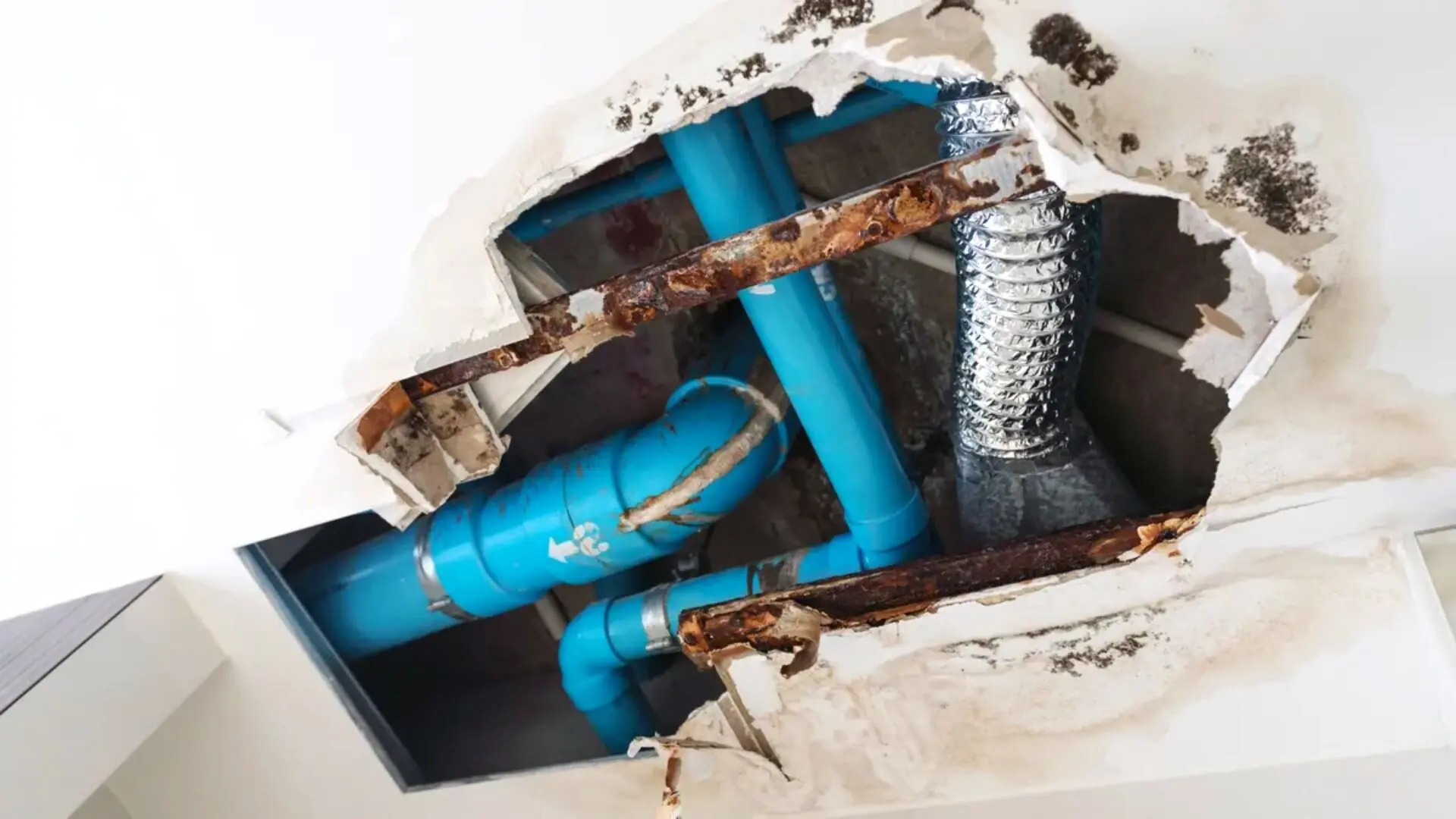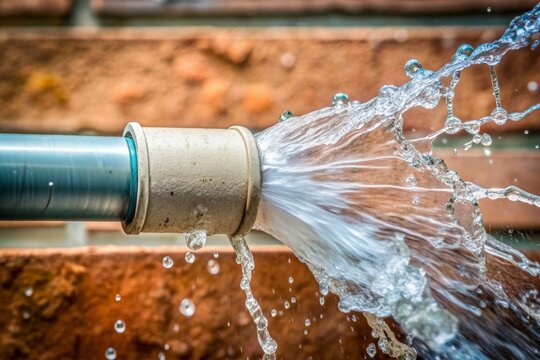What to Do When a Burst Pipe Causes Water Damage in Your Home
What to Do When a Burst Pipe Causes Water Damage in Your Home
Blog Article
Preventing Ruptured Pipes: Vital Tips to Safeguard Your Plumbing
Preventing burst pipes is an essential concern for house owners, specifically throughout cooler months when the risk of freezing is heightened. Executing calculated actions such as correct insulation, regular inspections, and maintaining consistent indoor temperature levels can significantly reduce the possibility of pipe failure.
Understand Pipe Vulnerabilities
Understanding pipe vulnerabilities is important for effective plumbing maintenance and preventing expensive damage. A number of elements contribute to the susceptibility of pipes to bursts, including material make-up, age, and ecological conditions. Older pipes, specifically those made from galvanized steel or polybutylene, often degrade over time, leading to increased risk of leakages and ruptures.
Temperature fluctuations can additionally dramatically influence pipe integrity. In cooler environments, water trapped in pipelines can ice up, applying and expanding stress on the pipe walls, which may inevitably cause a burst. High water stress can stress pipes, particularly at joints and bends, increasing the probability of failure.

Insulate Pipes Appropriately
Proper insulation of pipelines is crucial for preventing freezing and subsequent bursts during winter (burst pipe). Insulating your plumbing system efficiently safeguards versus temperature level goes down that can cause expensive damage. Begin by determining vulnerable areas where pipes are exposed to exterior temperature levels, such as basements, attics, and exterior wall surfaces
Use foam pipe insulation sleeves or cover insulation tape around these areas to offer a protective barrier. Make sure that all areas of the pipes, particularly those with limited warm direct exposure, get sufficient insulation. Pay unique attention to installations and joints, as these are more at risk to freezing.
When protecting, it's necessary to select products that satisfy local building regulations and are appropriate for the details setting. For circumstances, fiberglass insulation is usually suggested for its thermal resistance residential properties - burst pipe. Furthermore, think about utilizing heat cords or tape in extreme problems, which can be plugged in to provide additional heat
Regularly evaluate protected pipes for any indicators of wear or damage, as endangered insulation can decrease its efficiency. By taking these aggressive actions, you substantially lower the risk of pipeline bursts, making sure a trusted pipes system throughout the wintertime months.
Maintain Consistent Temperature
A stable indoor temperature level is important for protecting against ruptured pipes throughout the frigid months. When temperature levels drop, water within pipelines can ice up, expanding and creating pressure that may ultimately cause the pipes to burst. To alleviate this threat, house owners need to keep a consistent temperature throughout their space, ideally no lower than 55 basics ° F(13 ° C)Utilizing a programmable thermostat can aid take care of interior temperature levels successfully, making sure that spaces with pipes continue to see this site be cozy also when the home is empty. Pay special attention to locations that are a lot more prone to chilly, such as garages, attic rooms, and basements. Keeping closet doors open under sinks can likewise enable warmer air from the home to circulate around plumbing.
In enhancement, it is prudent to permit faucets to drip slightly throughout severe cold snaps. This minor flow of water can stop freezing by minimizing pressure within the pipelines. Furthermore, throughout particularly serious weather events, take into consideration temporarily putting on hold any nighttime problems on your thermostat to keep a stable cozy environment. By applying these strategies, house owners can significantly decrease the danger of pipeline bursts and protect their plumbing systems against the extreme winter aspects.
Regularly Inspect Plumbing
Normal inspections of plumbing systems are vital for protecting against ruptured pipelines and maintaining total home integrity. During these evaluations, it is important to check out noticeable pipes for signs of deterioration, leakages, or put on.
Additionally, examining joints and links is important, as these factors are often susceptible to leaks. Property owners should also assess water pressure levels, as excessive pressure can strain the pipes system and raise the threat of pipe ruptureds.
Consider organizing professional pipes examinations at least when a year, particularly before winter months, to ensure your system is prepared for cooler temperature levels. By being aggressive in your strategy, you can protect your home against the costly and disruptive effects of burst pipelines.
Know Emergency Procedures
Comprehending emergency treatments is crucial for every house owner, particularly after conducting normal pipes examinations. Being prepared for a pipes emergency can significantly reduce damages and save expenses. First, find your primary water shut-off shutoff; it is typically located near the water meter or where the main line enters your home. Acquaint on your own with its operation, as turning off the water supply quickly can protect against considerable flooding.
Following, maintain important devices helpful. A plumbing emergency kit should consist of a wrench, bettor, and towels, as well as a flashlight and a container for small leakages. In addition, think about having the get in touch with info for a relied on plumbing technician easily available, should the situation rise beyond your control.
If you identify a leak or ruptured pipe, right away turn off the water system and alert your plumbing. Moreover, document the damages with pictures for insurance policy functions. burst pipe. Recognize the signs of prospective pipes problems, such as unusual water pressure fluctuations or damp places on wall surfaces
Eventually, positive understanding and speedy activity are essential in taking care of plumbing emergency situations, guaranteeing your home stays safeguarded and decreasing potential damage.

Conclusion
In verdict, stopping ruptured pipes demands a diverse approach that includes understanding pipeline vulnerabilities, proper insulation, maintaining regular indoor temperatures, routine inspections, and understanding of emergency situation procedures. By implementing these crucial methods, the threat of pipes failures can be substantially minimized, thereby making certain the long life and performance of the plumbing system. Resources Aggressive measures not only protect versus prospective damage but likewise add to overall water preservation and the security of home.
In chillier environments, water entraped in pipelines can ice up, exerting and expanding pressure on the pipeline walls, which might inevitably lead to a ruptured. When temperature levels decrease, water within pipes can freeze, expanding and creating stress that may ultimately create the pipelines to ruptured. By implementing these approaches, house owners can substantially lower the risk of pipe bursts and safeguard their plumbing systems versus the rough winter months components.

Report this page